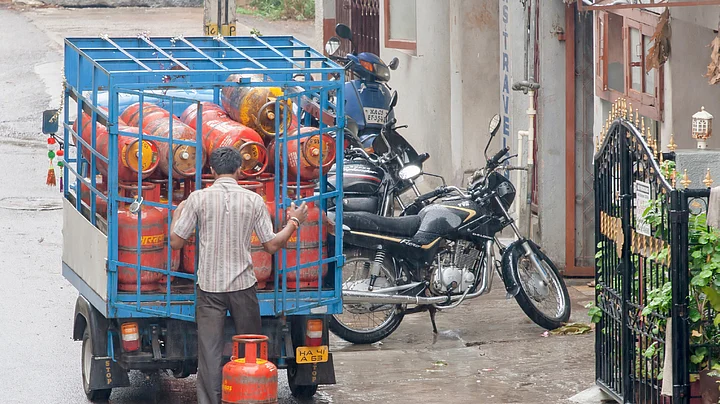Canada-based think tank IISD (International Institute for Sustainable Development) has come up with a research paper that refutes government’s claims on savings in the Aadhar-linked LPG subsidy scheme. Authored by Kieran Clarke, the paper dated March 16 questions the implementation of the subsidy scheme as their estimates suggest that savings from the new scheme (which came into force across India since January 1, 2015) cannot be more than Rs 12-14 cr for the FY 2014-15.
The research paper notes:
Putting aside the relative merits of Aadhaar as a public policy tool, our calculations indicate that, instead of resulting in significant savings, the net fiscal impact of integrating Aadhaar into DBTL in the current financial year was likely to be minimal, and that expectations of substantial net savings in subsidy expenditure from the introduction of the Aadhaar scheme may be misplaced.Research paper titled, “Ghost Savings: Understanding the fiscal impact of India’s direct transfer program”
The government has so far been claiming in its various statements as well as press releases from the Ministry of Petroleum & Natural Gas that savings from the Aadhar-linked gas scheme has been to the tune of Rs 14, 672 crore for FY 2014-15. KM Mahesh, a deputy secretary in the Ministry of Petroleum and Natural Gas stands by the figures quoted by the government. “The basis on which we have worked out savings of the PAHAL scheme are the 3.34 crore accounts that we were able to block and then arrived at savings”, said Mr Mahesh in a telephonic conversation with The Quint.”
In a press release dated October 12, 2015 the ministry claims of weeding out 3.34 fake accounts and has pegged the savings at Rs 14, 672 cr (assuming 12 cylinders being given at a subsidy of Rs 336).
What Explains the Difference?
The huge difference between the government estimates and research done by this international think tank lies in assuming the number of ghost beneficiaries weeded out as a result of Aadhar-based biometrics. As an editorial in the Financial Express explains the difference – if out of 100 beneficiaries eligible for a subsidy of Rs 100 each, only 75 are identified as genuine beneficiaries. It means that 25 were fake beneficiaries taking undue advantage of govt-run scheme. Now if out of remaining 75, only 70 actually turn up to claim for the subsidy on the basis of Aadhar card, we have a total of 30 ghost beneficiaries. Now follows the tedious part, a divergence in the calculation of savings:
a) Government’s method of calculating savings:
30 * 100 = Rs 3000
b) IISD’s method of calculating savings”
5*100 = Rs 500
(Why take into account 5 who didn’t turn up? Because they are the consumers who were availing undue benefits by listing themselves for the subsidy schemes).
The research paper by the international think tank lists two figures: Rs 143 crore as the reduction in subsidy expenditure and Rs 14 crore as the gross savings for the FY 2014-15.
Author of the paper, Kieran Clarke refused to comment on the findings of the paper, he however did offer a clarification on the two figures quoted in the research note.
Rs 143.2 crore is the total theoretically estimated subsidy savings from implementing DBTL (Aadhaar and non-Aadhaar). This is based on the chief economic advisor’s own estimates using a consumption based methodology. It does not include the costs of implementation. In comparison, the figure of 12 to 14 crore is representing the estimated saving only through Aadhaar based de-duplication, as laid out in the most recent note we published. Hence it is a small fragment of the total savings.Kieran Clarke, Researcher, International Institute for Sustainable Development in an email reponse
As the debate on Aadhar rages on with questions being raised on the breach of privacy, it is worth doing a reality check as to what extent the program has been helpful in making sure that benefits reach the intended beneficiaries.
Experts including the Dhande committee report in 2014 have lauded the Aadhar-linked LPG subsidy scheme in helping to identify duplicate consumers, the fear however is about their re-appearance in the system all over again as well as evaluating the real cost of implementation of the scheme.
(At The Quint, we question everything. Play an active role in shaping our journalism by becoming a member today.)
